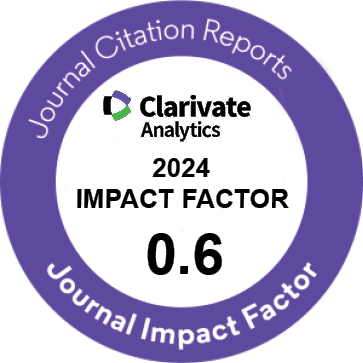| Original Article | |
| Evaluation of the In Vitro Fertilization Success Rate in Transfer of Top-Quality Embryo Versus Poor-Quality Embryos: A Cohort Study | |
| Firoozeh Akbari Asbagh1, Fatemeh Davari Tanha1, Zahra Rezaei1, Mahbod Ebrahimi1, Tayebe Hemmati1, Mojgan Talebbidokhti1, Amir Ahmadi2, Elham Feizabad1 | |
| 1Department of Obstetrics and Gynecology, Yas hospital, Tehran University of Medical Sciences, Tehran, Iran 2Besat General Hospital, Takhti Highway, Hejrat St., Basij Highway, Tehran, Iran |
|
|
IJWHR 2022; 10: 156-160 DOI: 10.15296/ijwhr.2022.27 Viewed : 3629 times Downloaded : 2721 times. Keywords : IVF, Pregnancy outcome, Embryo quality, Ovulation induction protocol, Infertility |
|
| Full Text(PDF) | Related Articles | |
| Abstract | |
Objectives: To evaluate the in vitro fertilization success rate by transferring top- versus low-quality embryos. Materials and Methods: This prospective cohort study was conducted on 199 infertile women. Ninety-nine patients underwent an agonist cycle (70 fresh embryo transfer [ET] and 29 frozen ET), and 100 patients received an antagonist cycle (28 fresh ET and 72 frozen ET) in the infertility department of a tertiary university-based hospital between May 2019 and March 2020. The blastocysts classified as AA, AB, and BB, as well as AC, BC, and CC were considered as top- and poor-quality embryos (TQE and PQE). The study outcomes were biochemical and clinical and determined the rate of pregnancy. Results: The average age of the participants was 32.44 ± 5.25 years old. Women with TQE were significantly younger than those with PQE (31.35 ± 4.97 vs. 34.09 ± 5.27, P < 0.001). In addition, the duration of women’s infertility was significantly (P < 0.001) correlated with the embryo’s top quality. A positive β-human chorionic gonadotropin was detected in 12.6% (n = 25) of women while clinical pregnancy was investigated in 8% (n = 16) of them. The fetal heart rate was detected in 7.5% (n = 15). Eventually, the clinical (P = 0.020) and determined (P = 0.030) pregnancy rates significantly differed between two study groups with a higher level in the TQE group. Conclusions: It seems that TQP transfer should be the first recommendation for infertile women, but when the double-embryo transfer (DET) is needed according to the patient’s condition, she should be informed that the quality of the second embryo may have an adverse impact on pregnancy consequences. |
Cite By, Google Scholar
Google Scholar
PubMed
Online Submission System
 IJWHR ENDNOTE ® Style
IJWHR ENDNOTE ® Style
 Tutorials
Tutorials
 Publication Charge
Women's Reproductive Health Research Center
About Journal
Publication Charge
Women's Reproductive Health Research Center
About Journal
Aras Part Medical International Press Editor-in-Chief
Arash Khaki
Mertihan Kurdoglu Deputy Editor
Zafer Akan























